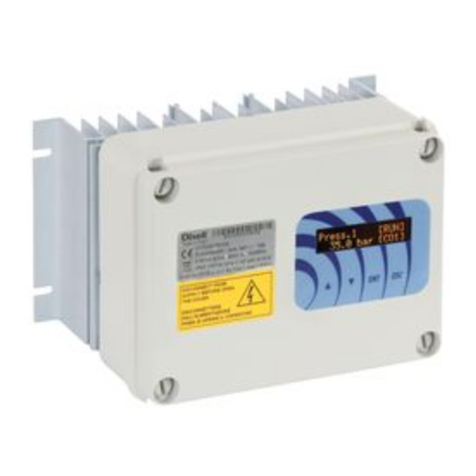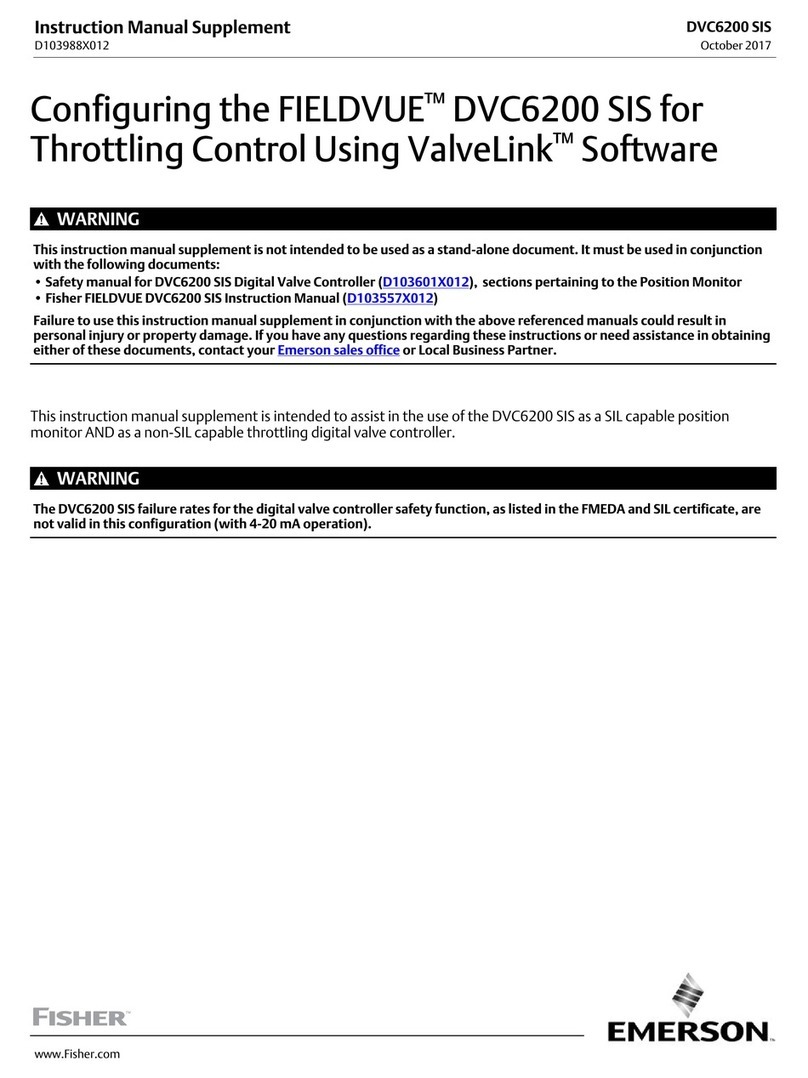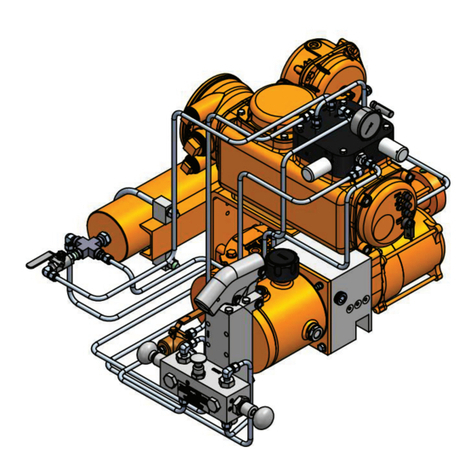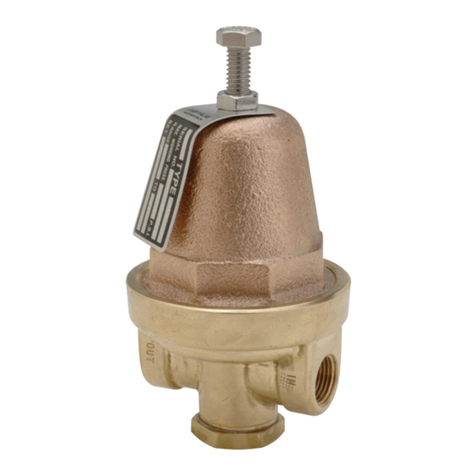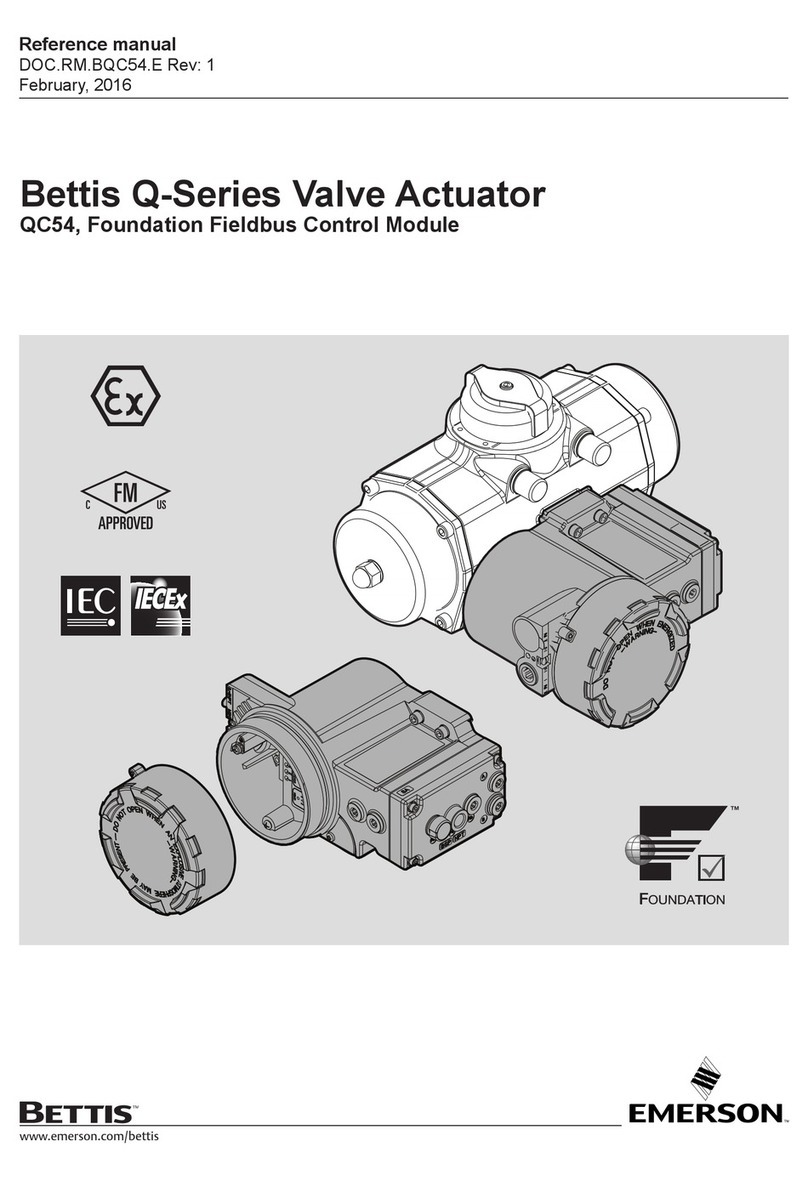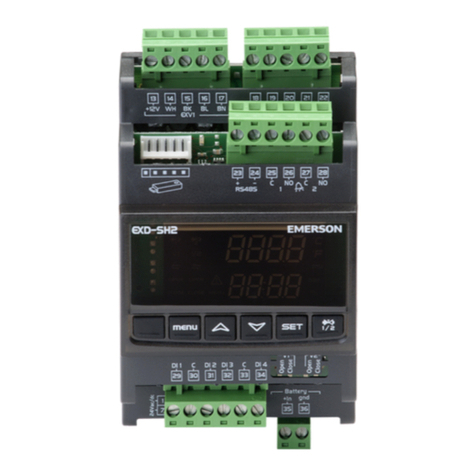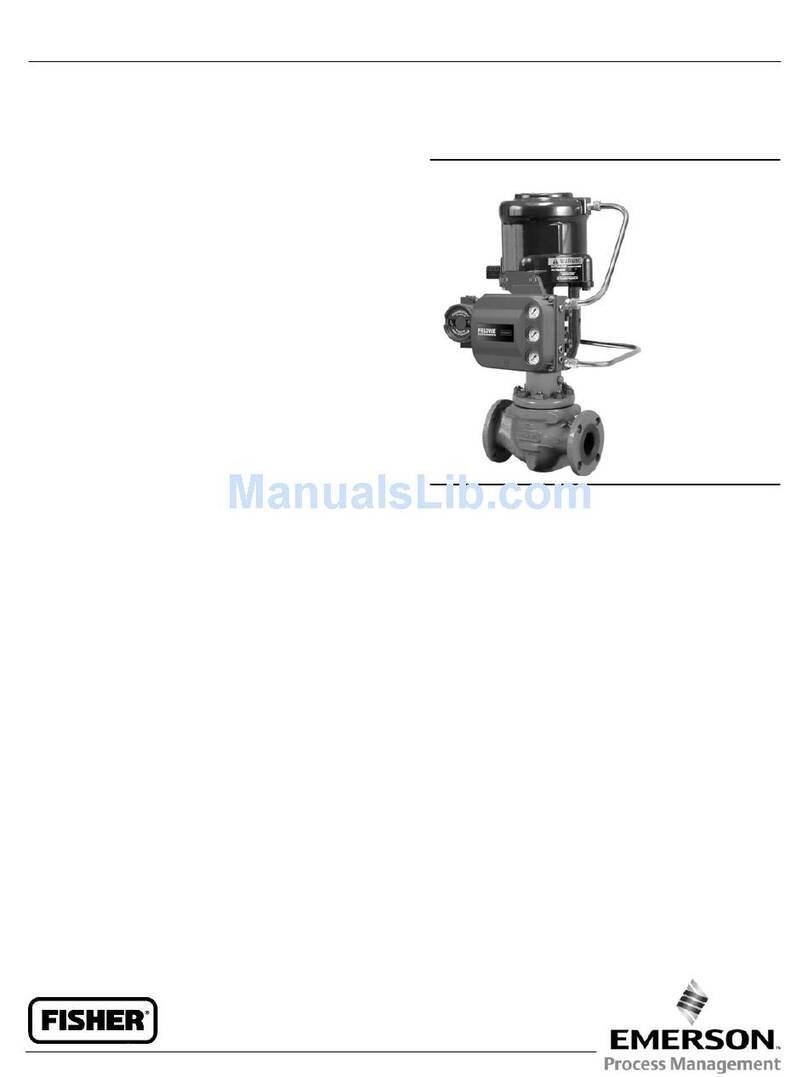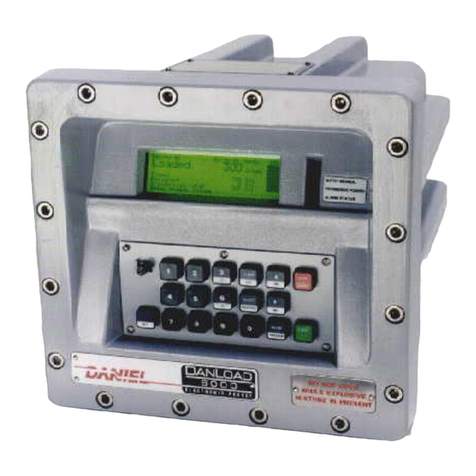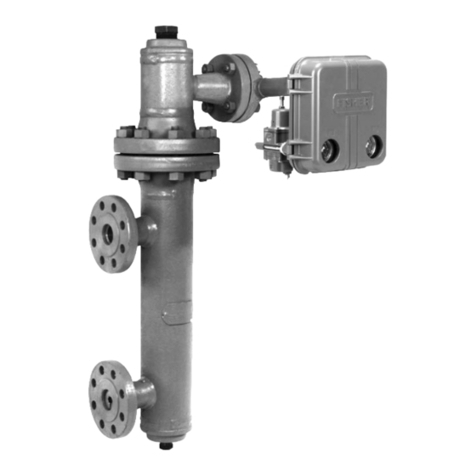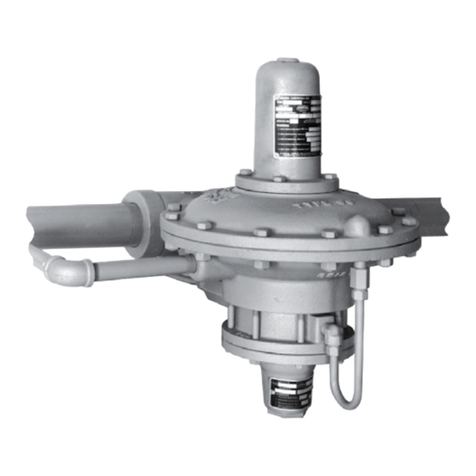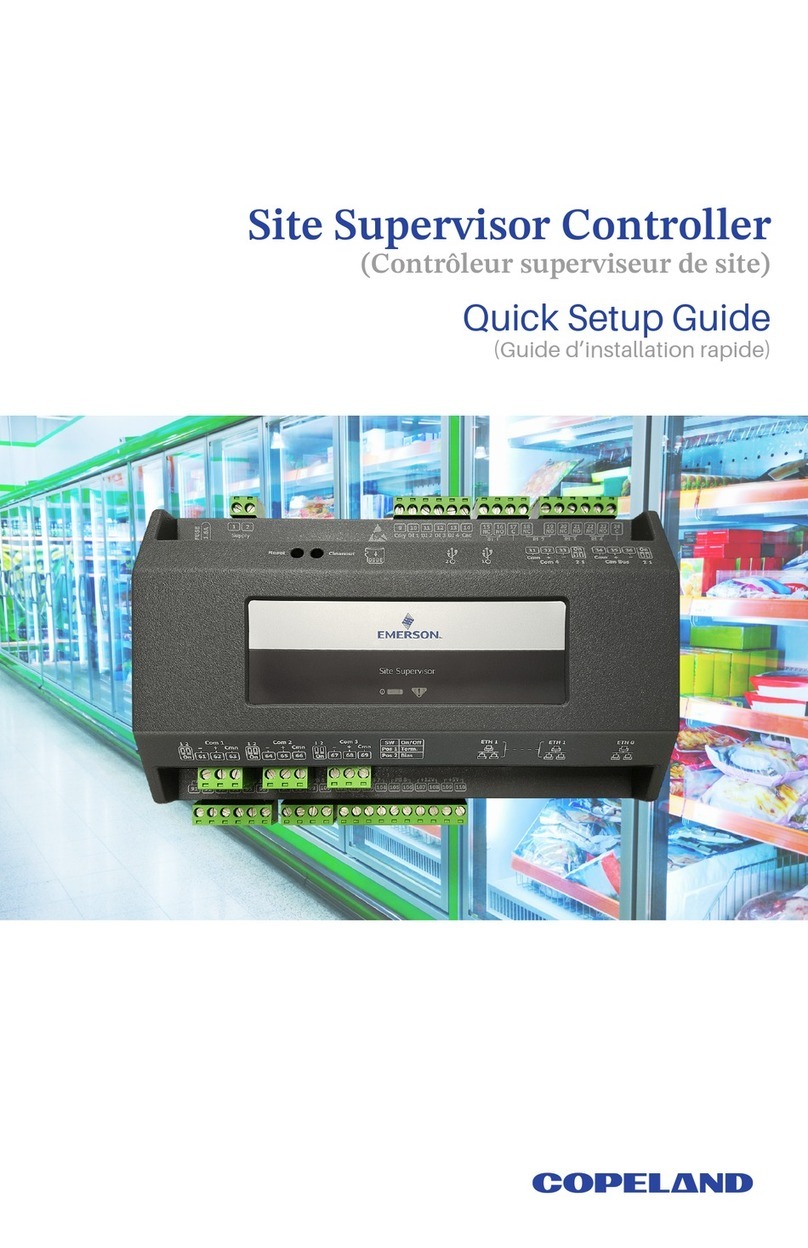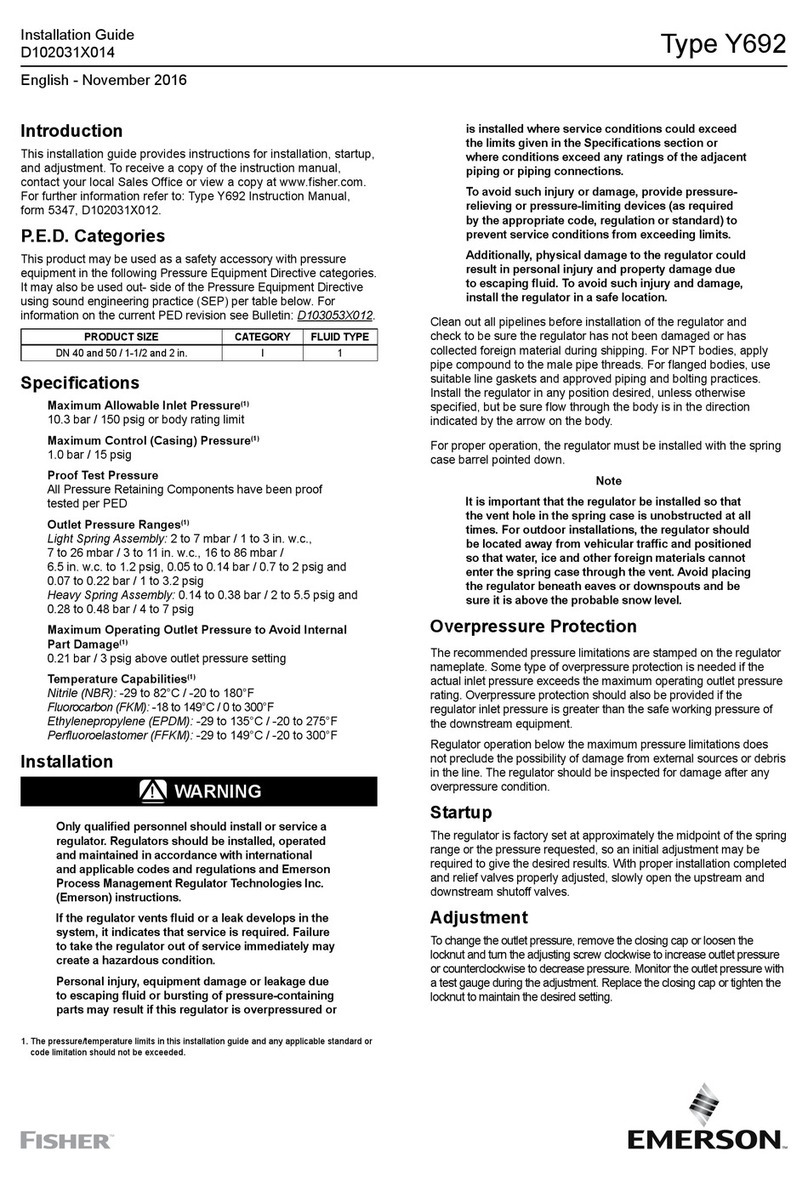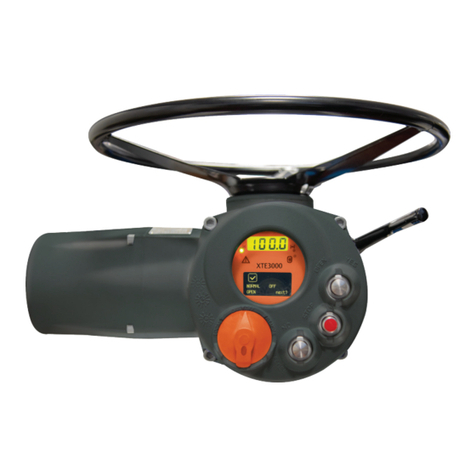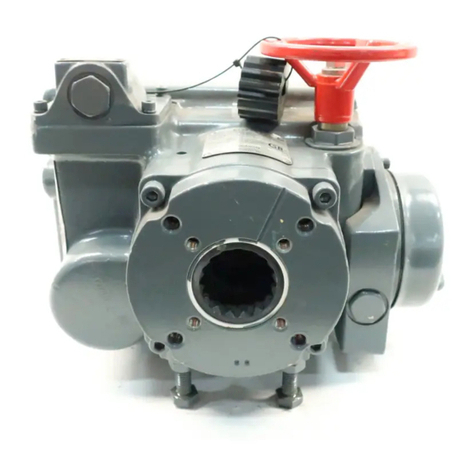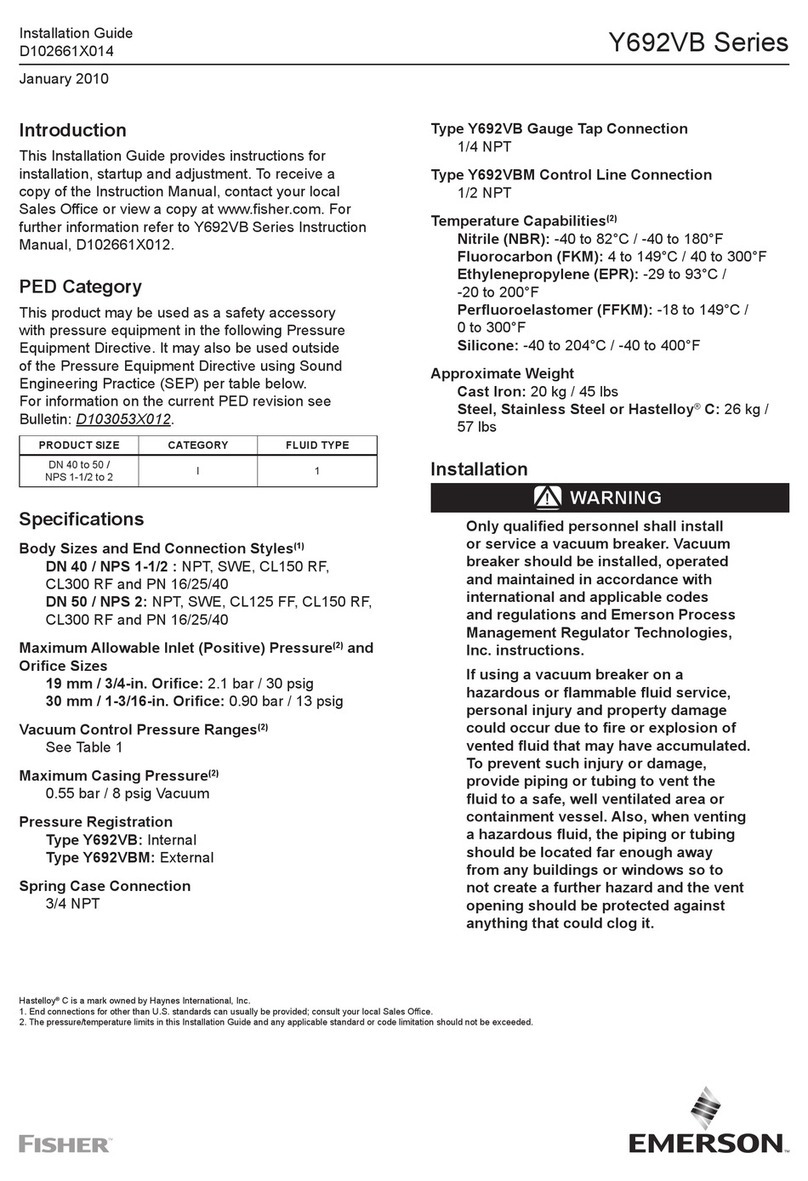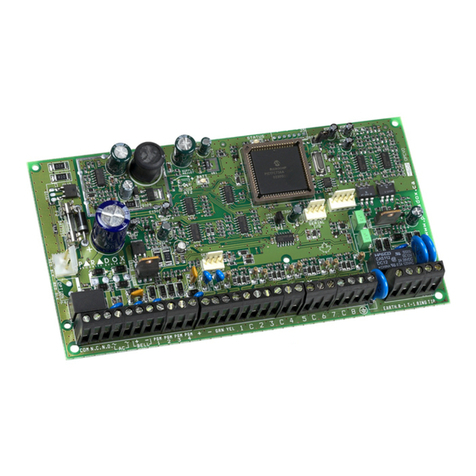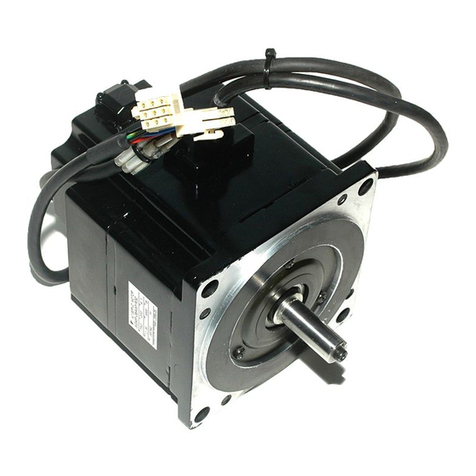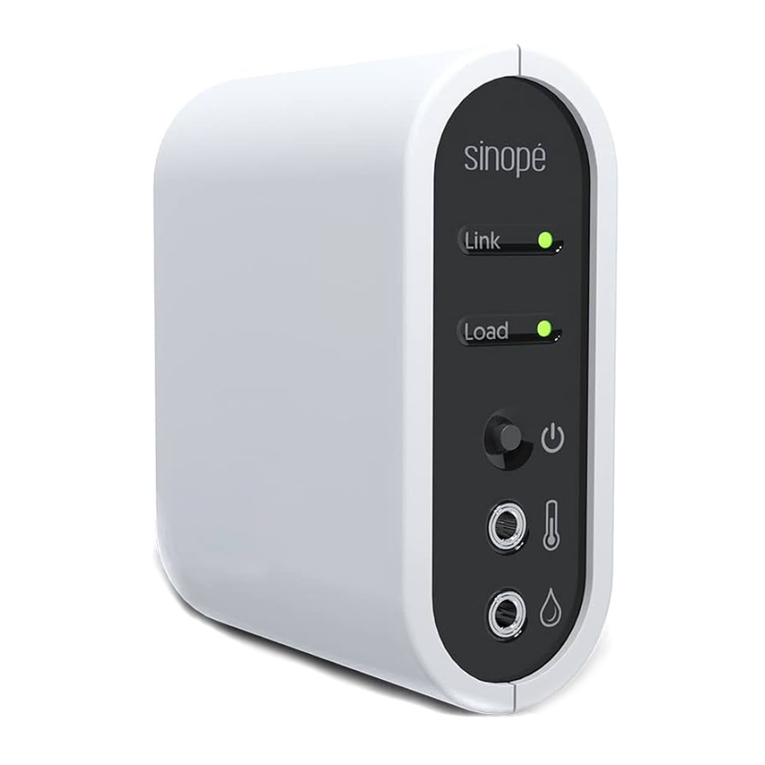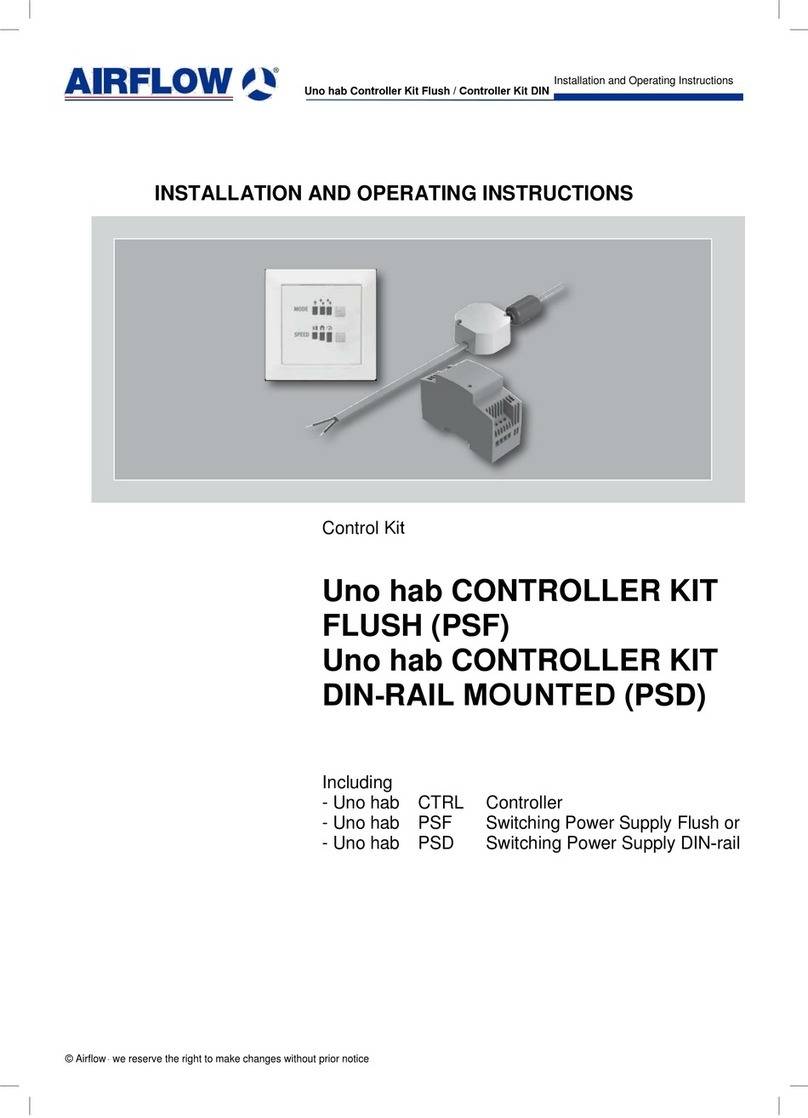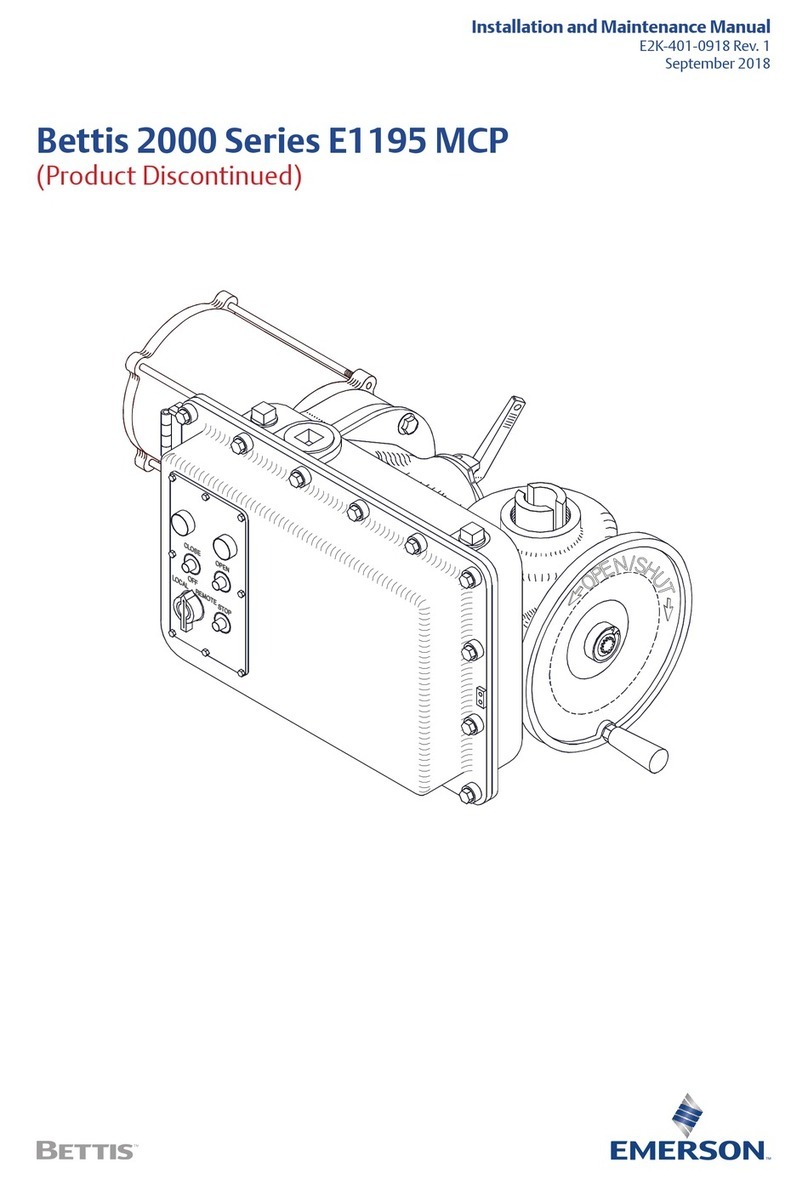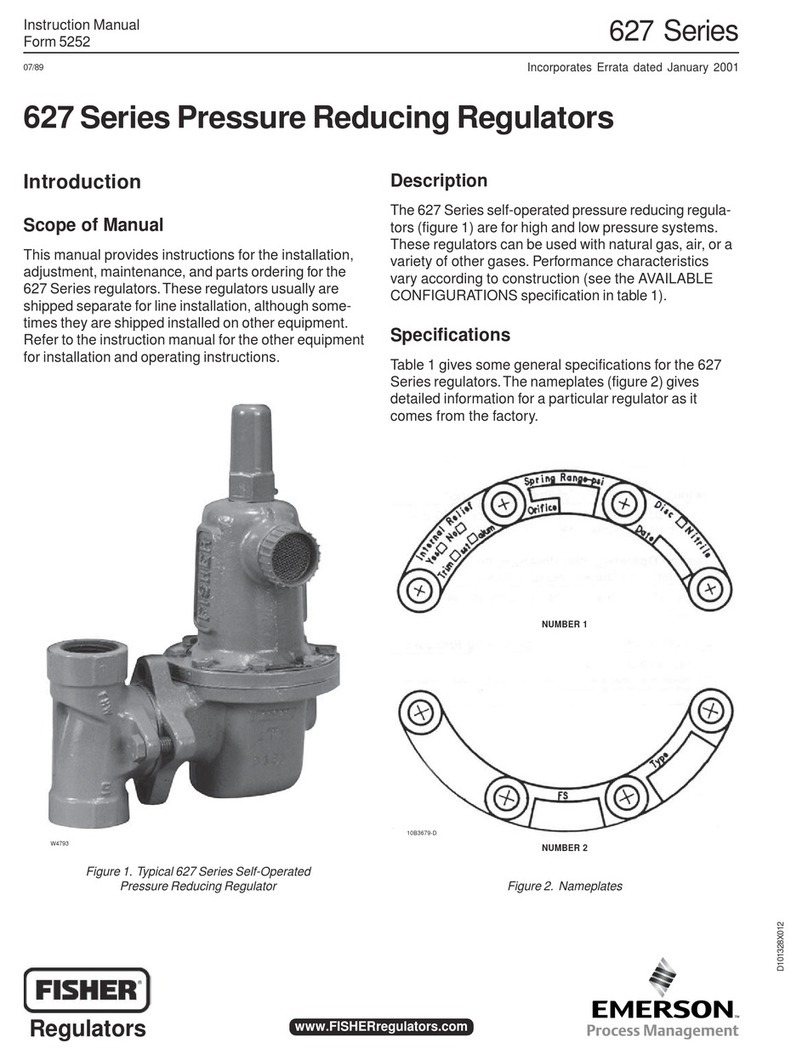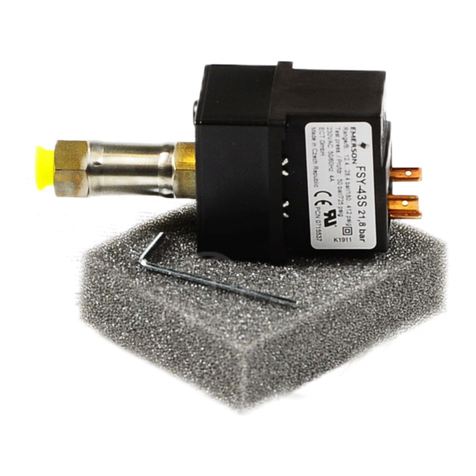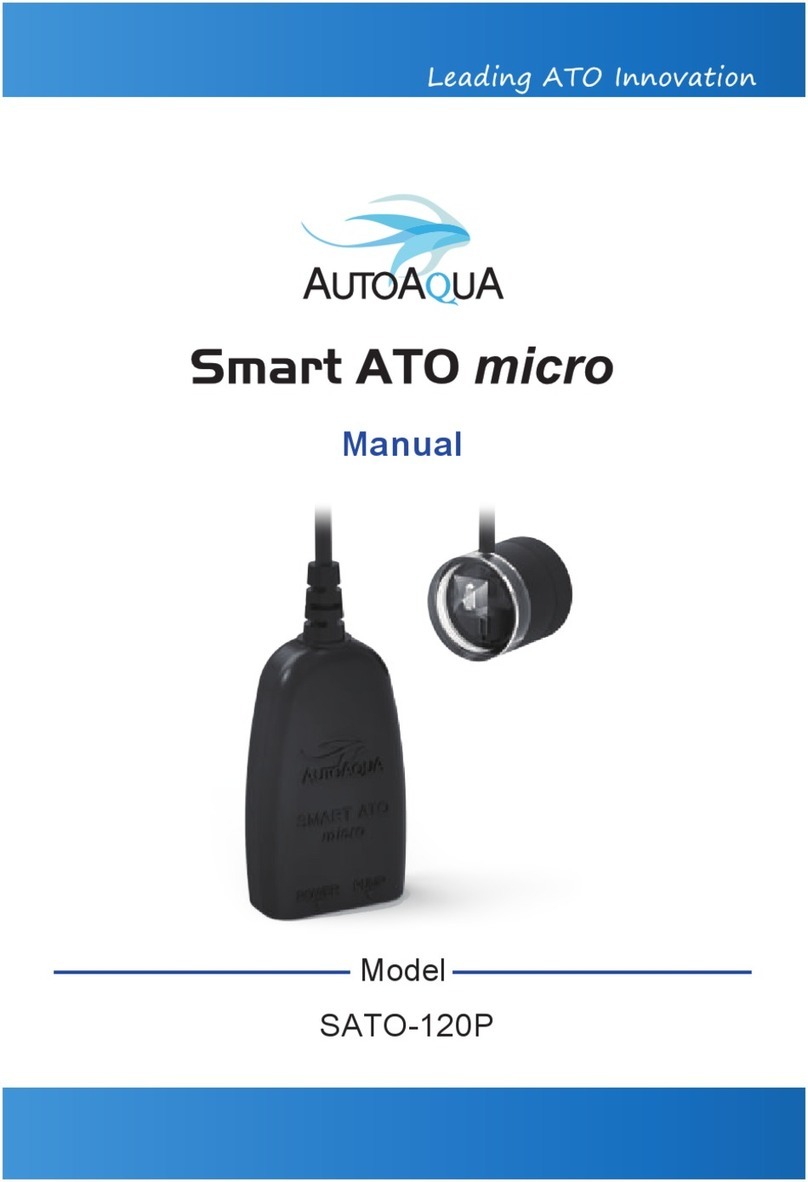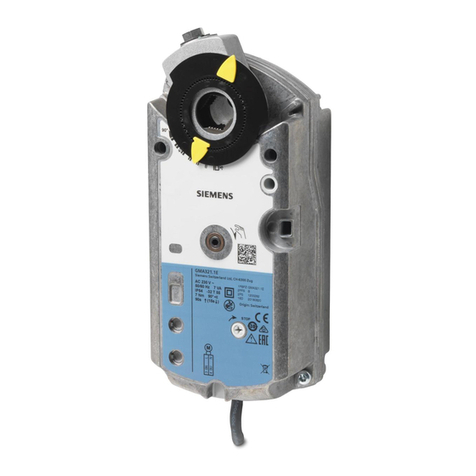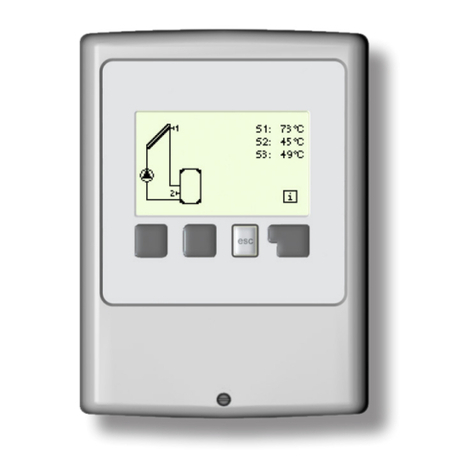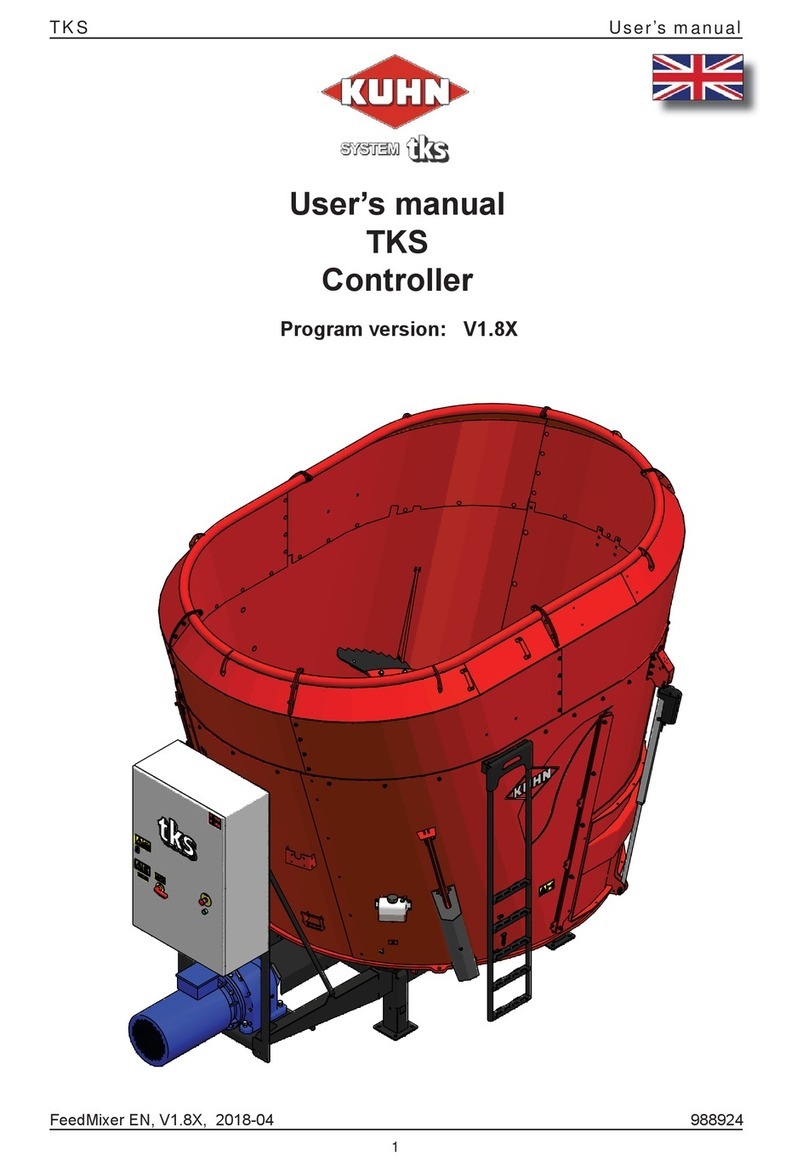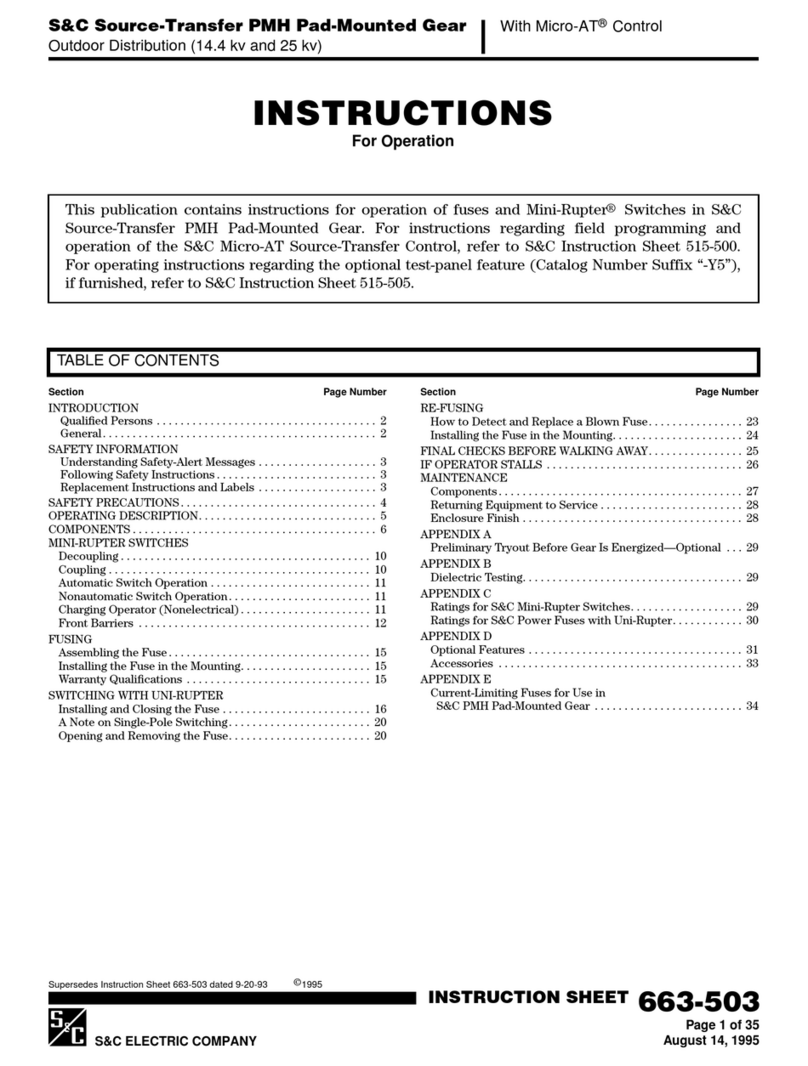from vehicular trafc and positioned
so that water, ice and other foreign
materials cannot enter the spring
case through the vent. Avoid placing
the regulator beneath eaves or
downspouts and be sure it is above
the probable snow level.
Overpressure Protection
The recommended pressure limitations are
stamped on the regulator nameplate. Some type of
overpressure protection is needed if the actual inlet
pressure exceeds the maximum operating outlet
pressure rating. Overpressure protection should
also be provided if the regulator inlet pressure
is greater than the safe working pressure of the
downstream equipment.
Regulator operation below the maximum pressure
limitations does not preclude the possibility of
damage from external sources or debris in the line.
The regulator should be inspected for damage after
any overpressure condition.
Startup
The regulator is factory set at approximately
the midpoint of the spring range or the pressure
requested, so an initial adjustment may be required
to give the desired results. With proper installation
completed and relief valves properly adjusted,
slowly open the upstream and downstream
shutoff valves.
Adjustment
The adjustment of setpoint is performed using
the pilot adjusting screw. To change the outlet
pressure, loosen the jam nut and turn the adjusting
screw clockwise to increase outlet pressure or
counterclockwise to decrease it. Monitor the outlet
pressure with a test gauge during the adjustment.
Tighten the jam nut to maintain the desired setting.
If the regulator vents uid or a
leak develops in the system, it
indicates that service is required.
Failure to take the regulator out of
service immediately may create a
hazardous condition.
Personal injury, equipment damage
or leakage due to escaping uid
or bursting of pressure containing
parts may result if this regulator is
overpressured or is installed where
service conditions could exceed the
limits given in the Specications
section or where conditions exceed
any ratings of the adjacent piping or
piping connections.
To avoid such injury or damage,
provide pressure-relieving or
pressure-limiting devices (as required
by the appropriate code, regulation
or standard) to prevent service
conditions from exceeding limits.
Additionally, physical damage to the
regulator could result in personal
injury and property damage due to
escaping uid. To avoid such injury
and damage, install the regulator in a
safe location.
Clean out all pipelines before installation of the
regulator and check to be sure the regulator has
not been damaged or has collected foreign material
during shipping. For anged bodies, use suitable line
gaskets and approved piping and bolting practices.
Install the regulator in any position desired, unless
otherwise specied, but be sure ow through the
body is in the direction indicated by the arrow on
the body.
Note
It is important that the regulator be
installed so that the vent hole in the
spring case is unobstructed at all
times. For outdoor installations, the
regulator should be located away
Table 1. Outlet Pressure Ranges
TYPE OUTLET PRESSURE RANGE AC (ACCURACY CLASS)
PILOT CONTROL SPRING
INFORMATION
bar psig Spring Color
PRX/120
PRX/125
PRX/131
1.0 to 1.8
1.6 to 3.0
2.8 to 5.5
5.0 to 8.5
14.5 to 26
23 to 44
41 to 80
73 to 123
2.5%
2.5%
2.5%
2.5%
Yellow
Green
Blue
Black
8.0 to 14.5
14.0 to 23.0
22.0 to 30.0
116 to 210
203 to 334
319 to 435
1%
1%
1%
Silver
Gold
Aluminum
PRX/120-AP
PRX/125-AP 30.0 to 80.0 435 to 1160 1% Clear
